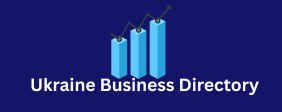Internet penetration in Poland Digital Poland is remarkably high, with over 88% of the population having access at the start of 2024. This widespread connectivity facilitates digital services, e-commerce, and information access for the majority of citizens, driving the digital economy.
Mobile Penetration Digital Poland and Smartphone Adoption
Mobile phone penetration in Poland exceeds 130% of the population, indicating multi-SIM card usage and extensive smartphone adoption. This poland phone number library 500k package high level of mobile connectivity underpins the growth of mobile-first services and digital inclusion across various demographics.
Broadband Speeds and Infrastructure Development
Poland continues to invest in broadband marketing b2b en china infrastructure, with median fixed internet download speeds reaching over 139 Mbps in early 2024. The ongoing rollout of fiber-optic networks and 5G technology aims to further enhance connectivity and support digital transformation.
E-Commerce Growth and Digital Transactions
E-commerce is a rapidly expanding sector in Poland, with a significant increase in online transactions and digital payments. This growth marketing list reflects changing consumer habits and increased trust in online platforms, contributing significantly to the national economy.
Social Media Digital Poland Engagement
Social media usage is pervasive in Poland, with a large percentage of the population actively engaging on various platforms. These platforms are crucial for communication, information sharing, and marketing, providing insights into social trends and consumer behavior.
Cybersecurity Incidents and Data Protection
With increased digital connectivity, data on cybersecurity incidents and data protection measures become crucial. Poland’s efforts to enhance cybersecurity frameworks and public awareness are vital for maintaining trust and security in the digital realm.
Digital Literacy and Inclusion Initiatives
While internet access is high, efforts to improve digital literacy across all age groups remain important. Initiatives to bridge any remaining digital divides and ensure equitable access to digital skills are crucia
